A burst pipe is a plumbing emergency that often occurs in Australian households.
It is caused when a pipe splits, cracks, or bursts, allowing water to escape uncontrollably. Burst pipes can be a nightmare for homeowners, causing extensive damage to property, furniture, and other household items.
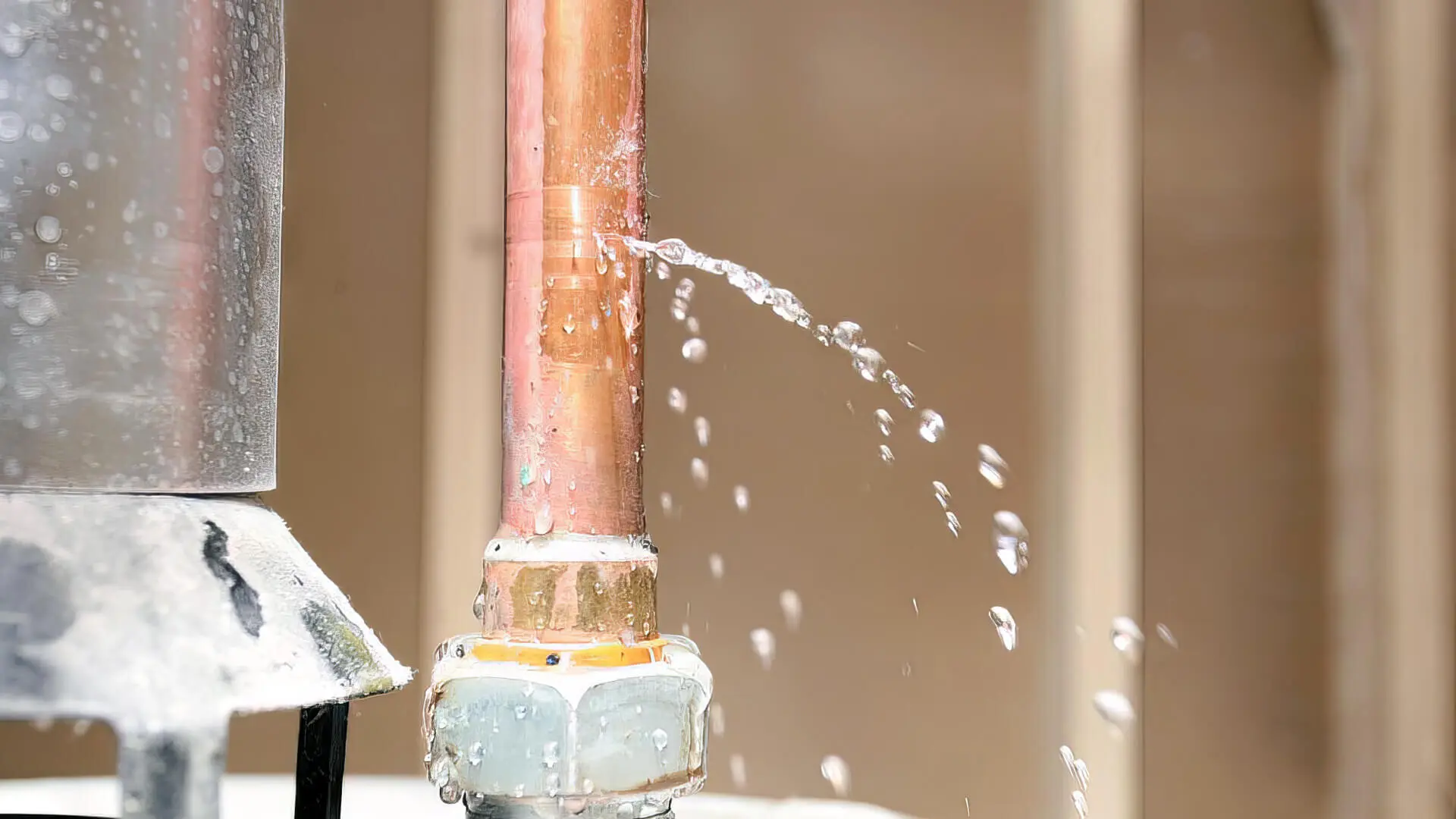
Acting quickly minimises further damage when faced with a burst pipe. Even a tiny burst pipe can lead to significant water damage if left unaddressed for an extended period. Plus, water travels through walls and floors, causing mould and structural damage that can be expensive to repair.
So, in this article, we’ll guide you on what to do when you have a burst pipe. We’ll also share some simple ways to locate a burst pipe and prevent such plumbing issues in the future.
Warning Signs Of A Burst Pipe
A burst in your plumbing can lead to serious water damage, so spotting the signs early is crucial. Once you do, reaching out to a reliable plumber or water damage expert becomes a priority to fix issues swiftly.
Here are some signs you must watch out for:
1. Pipe Noises
If you hear strange noises or metallic clangs from your pipes, it could suggest an issue leading to leaks or bursts. Pipes are typically quiet during water flow; unusual sounds might mean a break or damage.
2. Water Sounds
Another indication of a burst pipe is the sound of water in the walls. If you hear a steady water-dripping sound, a pipe inside the wall may be the culprit. However, it’s essential to rule out other sources of water sounds, such as from toilets, sinks, or tubs, before assuming a burst pipe.

3. High Water Bill
A surge in your water bill or water meter frequently indicates burst pipes. This is because considerable water is lost through the rupture or crack, resulting in wastage. Furthermore, as the water pressure is affected by a burst, homeowners may have to use more water than usual to attain sufficient water pressure, resulting in even higher bills.
4. Discoloured Water
If the colour of your water changes, it could be a sign of a burst pipe. However, unusual colours can also result from other causes. For instance, brownish water can result from high levels of manganese and may not necessarily indicate a burst pipe.
On the other hand, reddish water often indicates rust in the pipes, which can lead to a burst.
5. Large Puddles
If you notice a considerable increase in the size of a water puddle every time you turn on the taps, the pipe has probably burst. In contrast, tiny droplets are more indicative of a water leak. A damaged pipe leads to water accumulation beneath the pipes and can penetrate through the walls.
For instance, if a burst pipe is under the basin, the region directly beneath it will collect the most water. But, if the pipe bursts, the floor surrounding the bathtub and toilet will also have puddles. In the case of a leak, the water is more likely to remain beneath the basin.
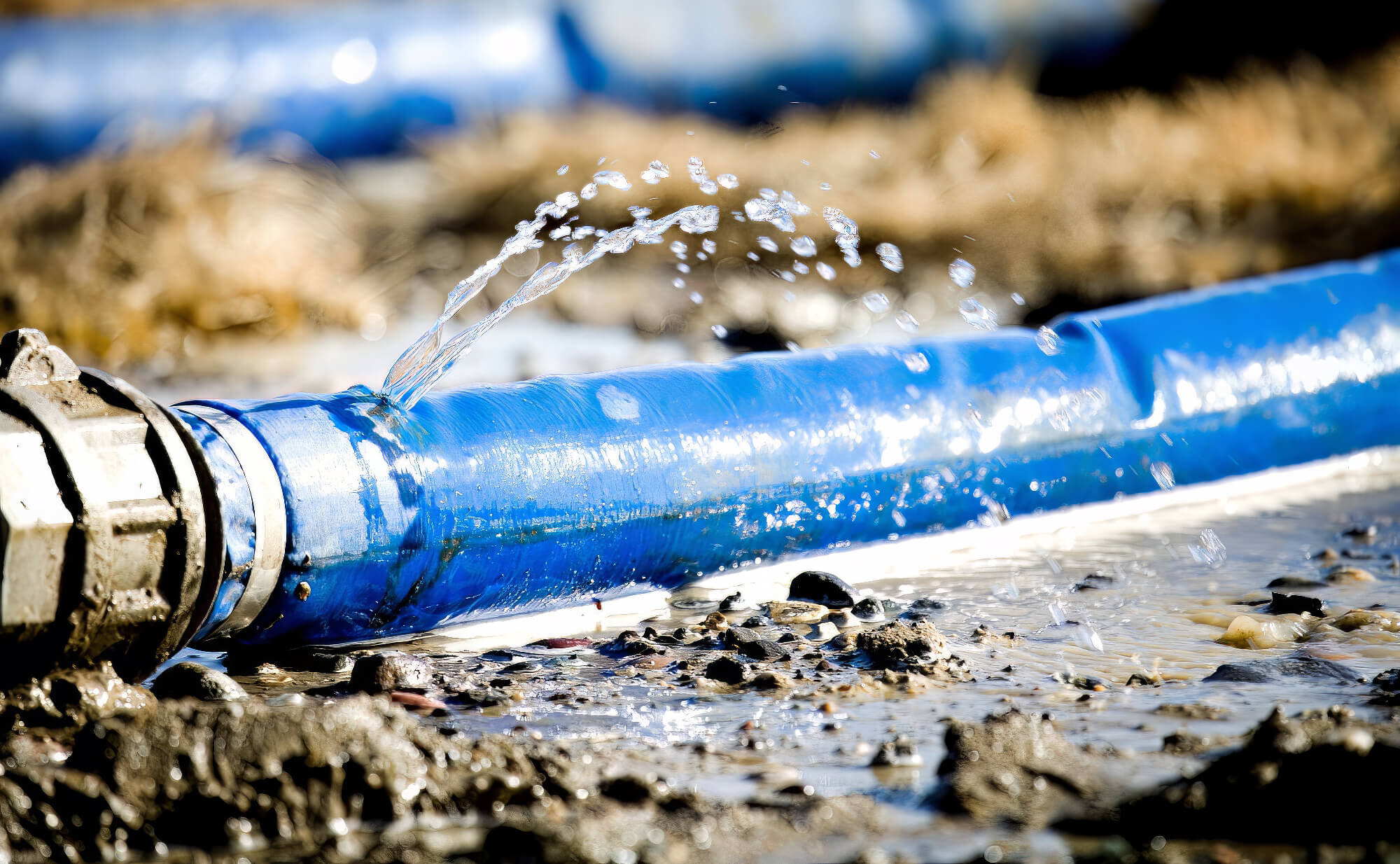
6. Low Water Pressure
A burst pipe causes water to escape through the rupture rather than reaching your taps, leading to noticeably reduced water pressure.
7. Water Smells
Foul odours coming from the water are also signs of a burst pipe. While there could be several reasons for a water smell, a metallic scent coupled with the other warning signs mentioned earlier often suggests a burst pipe.
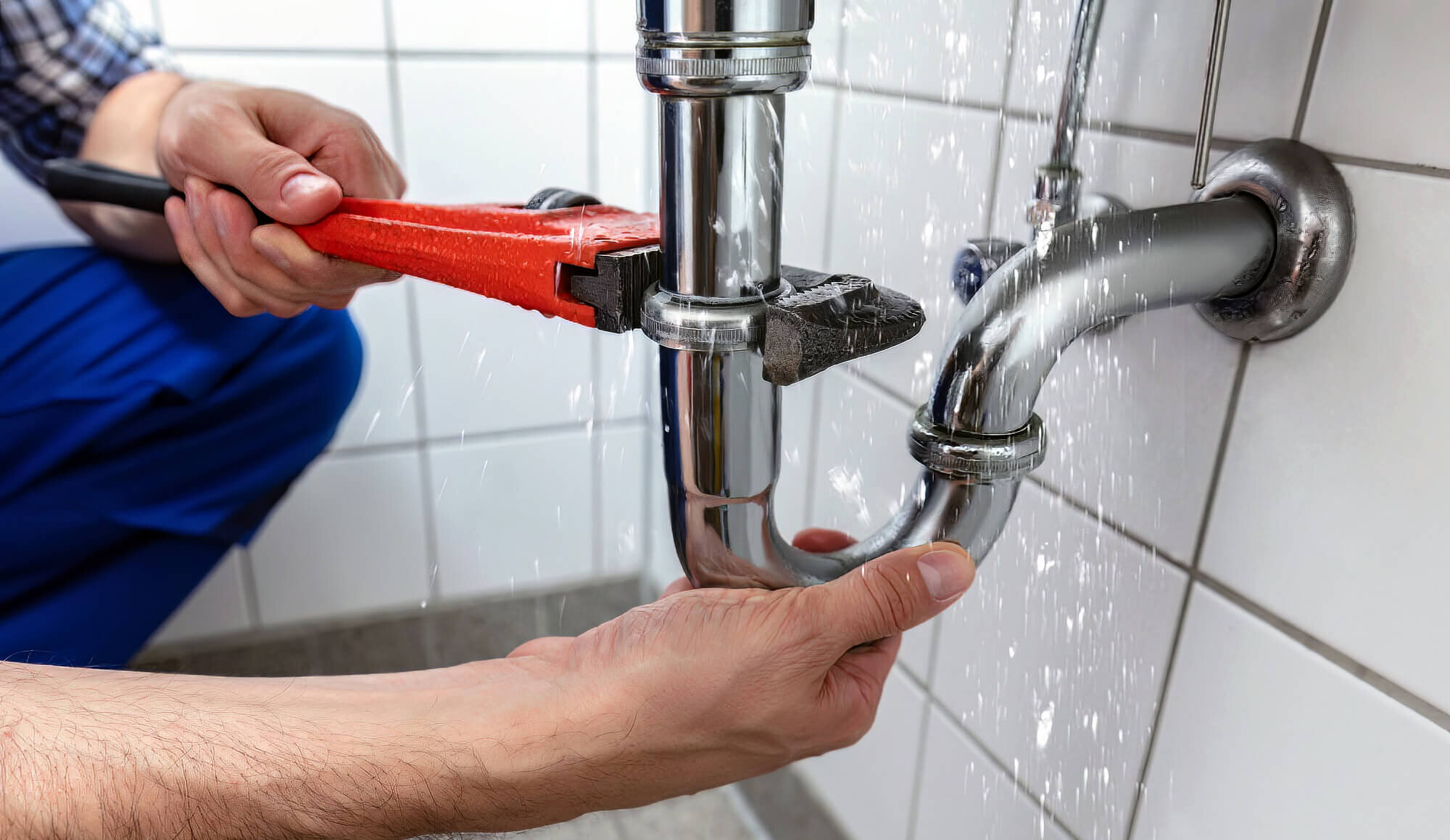
8. Wall Stains
Water stains on walls and ceilings often indicate a pipe problem, although other factors may cause them. Typically, large water stains point to a burst pipe, and the location of the stain can usually identify where the pipe has burst.
9. No Hot Water
If you turn on the hot tap and only get cold water, it might mean there’s a burst pipe in your hot water system. You’ll need to switch off the hot water service and take action to avoid damage.
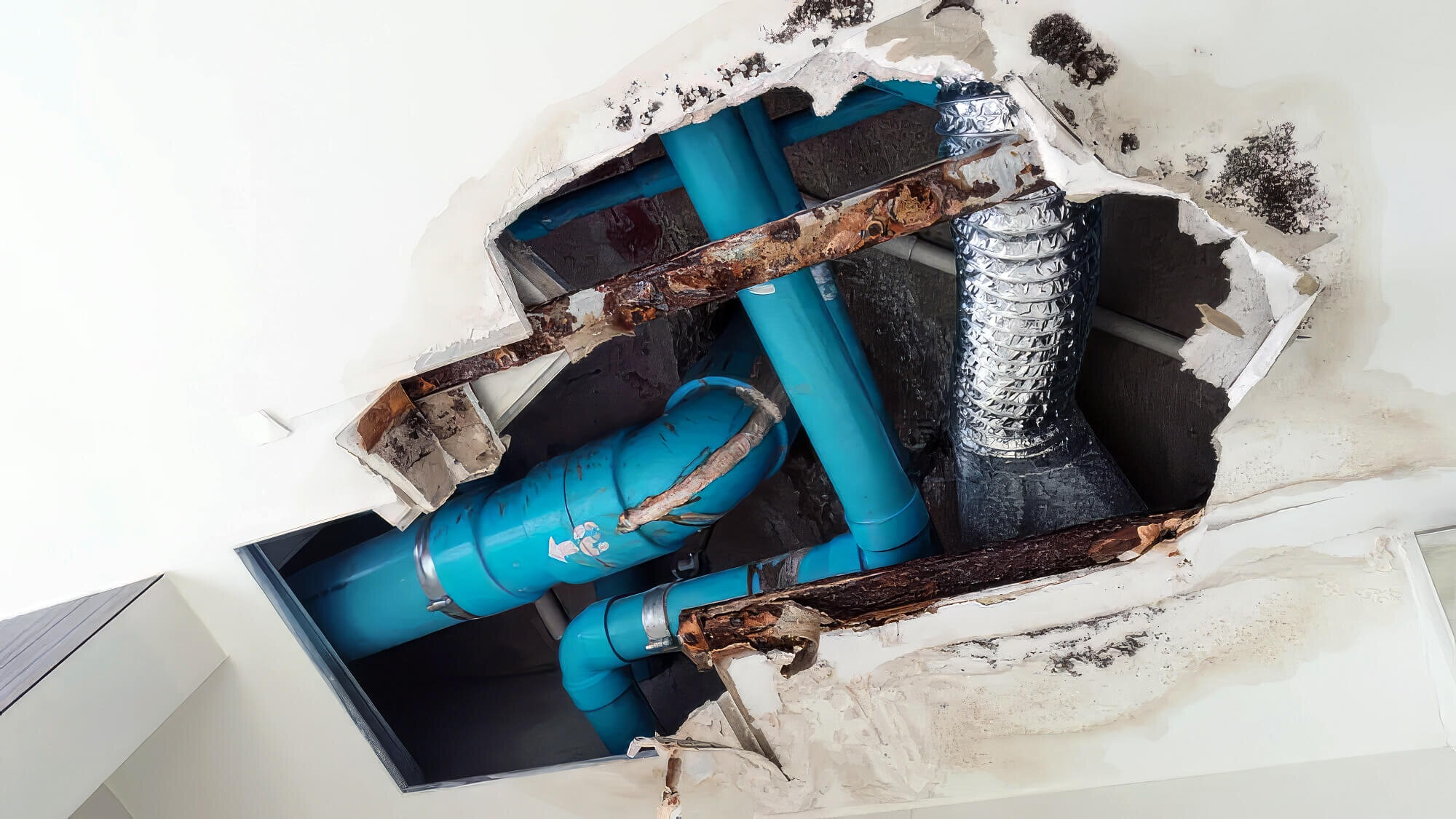
Immediate Actions To Take
Before the plumber arrives to conduct the actual repairs, homeowners can do the following to save water and prevent damage:
Step 1
Turn off the water supply to avoid new water entering the system so you won’t have to deal with more water damage.
Step 2
Contact a professional plumber as soon as possible to minimise the damage. The plumber will diagnose the cause, provide solutions, and fix the problem.
Step 3
Clean the water away quickly to prevent excess damage. The faster you clean, the less damage you will have to deal with.
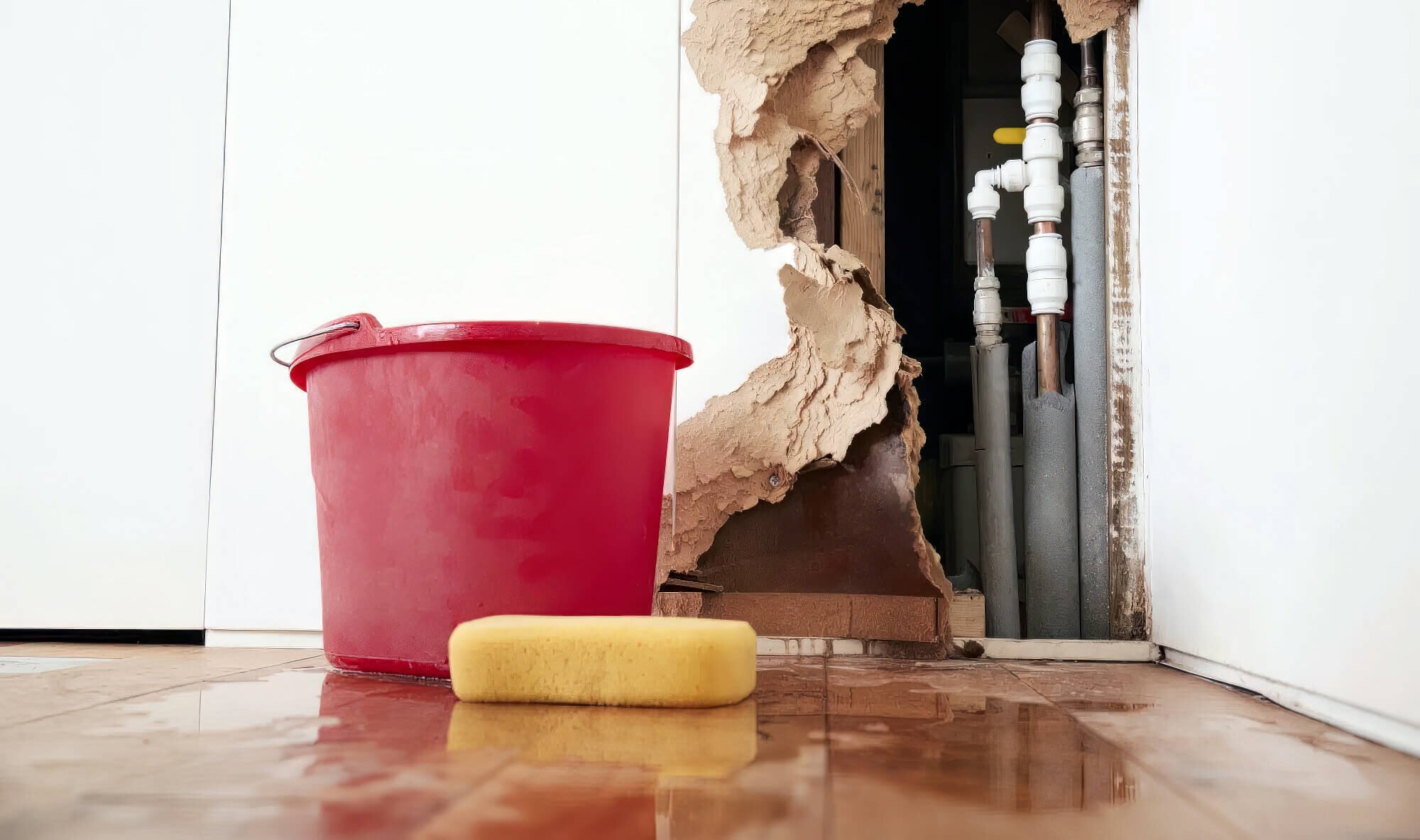
Step 4
Flush toilets and turn on the faucet to drain leftover water.
Step 5
Allow warm air circulation to bring frozen pipes to average temperature and prevent further damage. Keep the doors open and turn the heating devices to circulate warm air.
Step 6
Use a repair sleeve on the pipe to temporarily cover or fix the burst. It is an ideal quick fix till the plumber arrives.
Lastly, it is crucial to prioritise safety when dealing with a burst pipe. So, ensure you turn off the main power supply before attempting to handle any electrical appliances near the affected area. Wearing protective gear such as gloves and boots can also help prevent injuries while cleaning the water.
How To Find A Burst Pipe And Fix It
Locating the burst pipe can be challenging, especially if it is hidden behind a wall or underground. To find the pipe, look for signs of water damage, like water stains or mould growth. A moisture meter or thermal camera can also help pinpoint the leak’s exact location. However, if you need more confidence in locating the burst pipe, contact your local professional plumbers immediately.
Trying to fix a burst pipe or do major plumbing work yourself can be risky and might make things worse. It’s best to call a licensed plumber, equipped and trained to handle repairs safely and correctly.
But if you want to attempt to fix the burst pipe yourself, it’s essential to proceed with caution and wear protective gear. Depending on the severity of the damage, repairing the pipe may require cutting out the damaged section and replacing it with a new one.
Alternatively, a pipe clamp can be used as a temporary fix until a professional can make a permanent repair.
Preventing Future Burst Pipes
Burst pipes can result from various factors like freezing temperatures, corrosion, high water pressure, or simply old age. In cold weather, water can freeze and expand inside pipes, leading to cracks or bursts.
Burst water pipes can also be caused by corrosion, which occurs when the pipes deteriorate over time due to chemical reactions. High water flow or sudden changes in pressure can also cause a burst pipe.
To prevent burst pipes, pipes in colder areas, such as attics, basements, and crawl spaces, should be insulated. Regular maintenance checks by a licensed plumber can identify potential issues and prevent them from becoming major problems.
If a broken pipe occurs, it can disrupt the plumbing system and lead to water damage. Sometimes, a water meter may need to be shut off to stop the burst water pipe from causing further damage to the plumbing system and the water supply.
Being proactive with pipe maintenance is key to preventing bursts, as waiting for problems to happen could mean expensive repairs and significant water damage.



